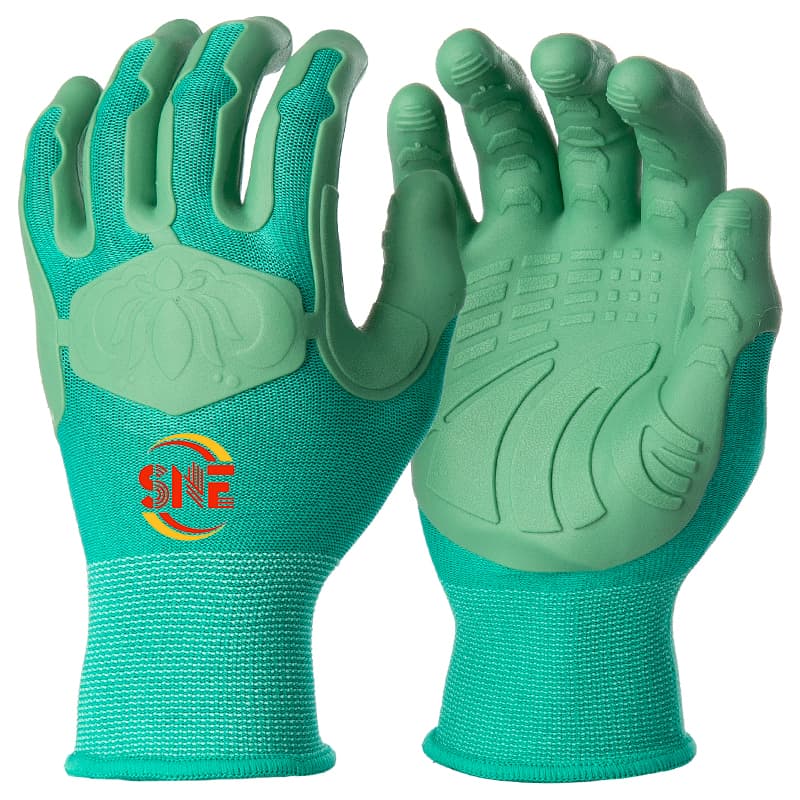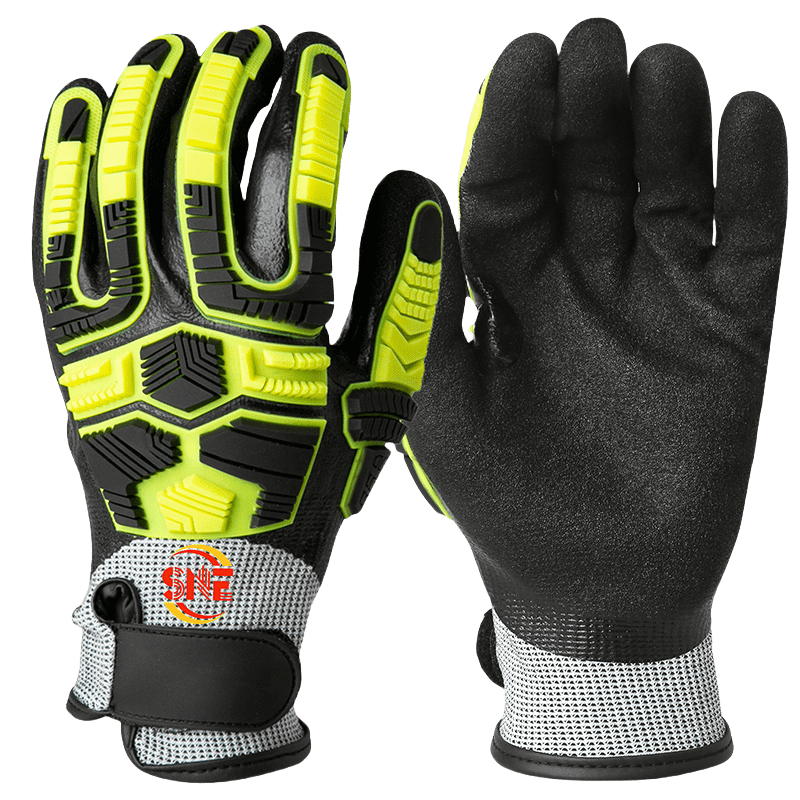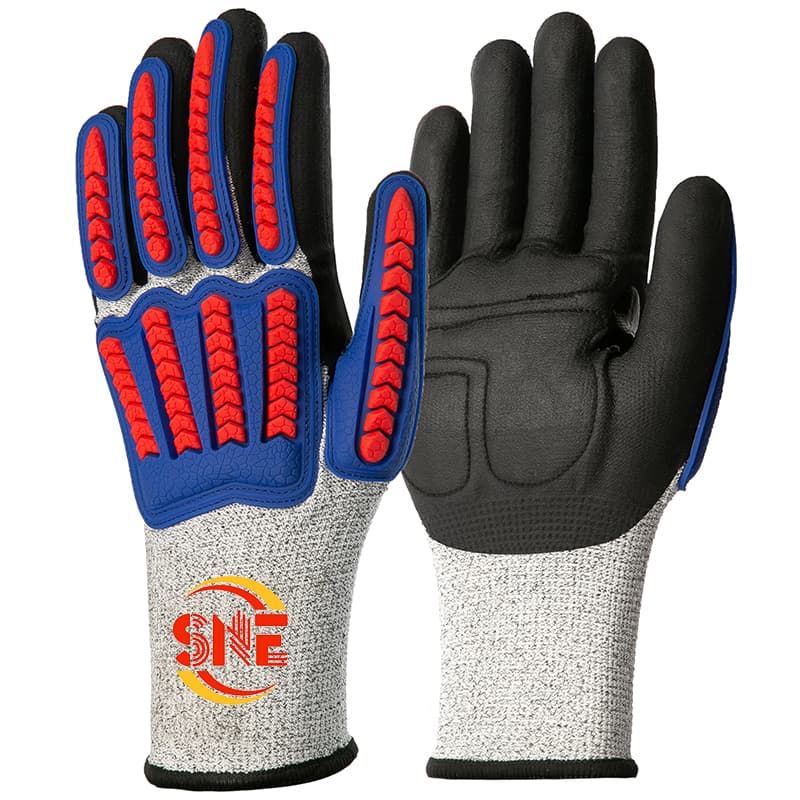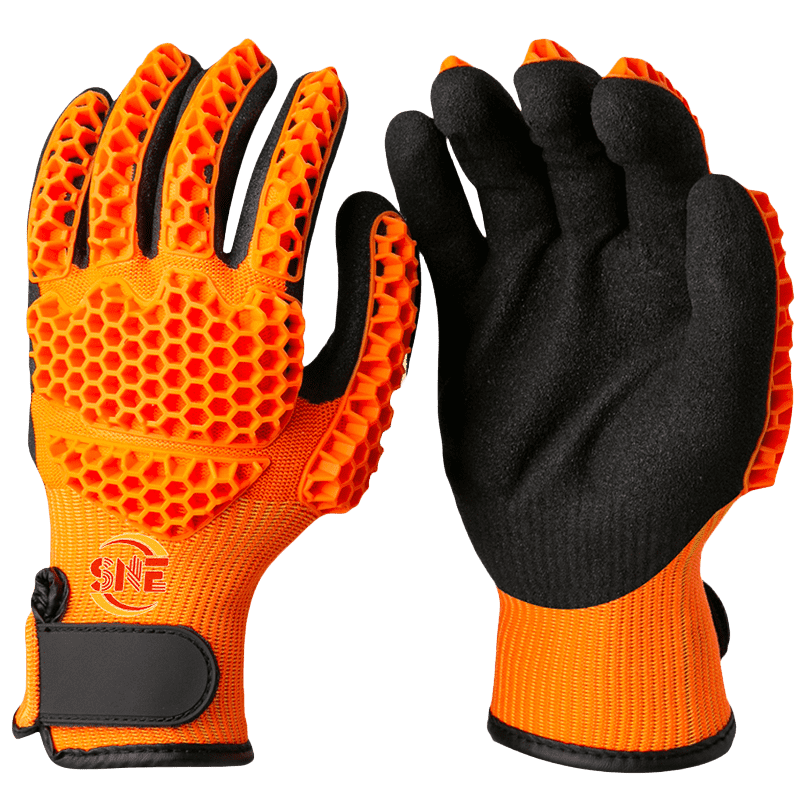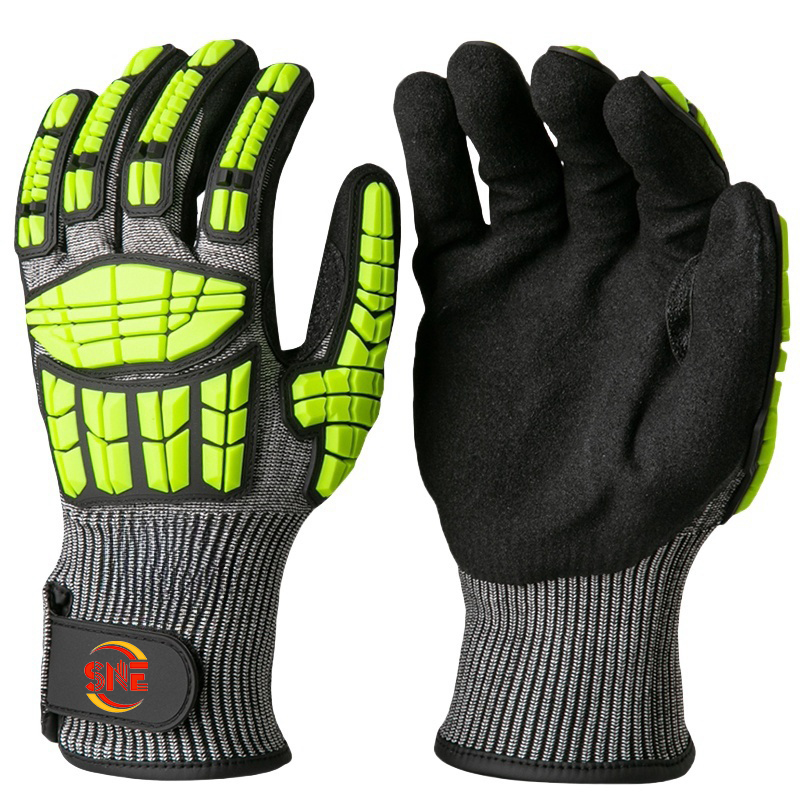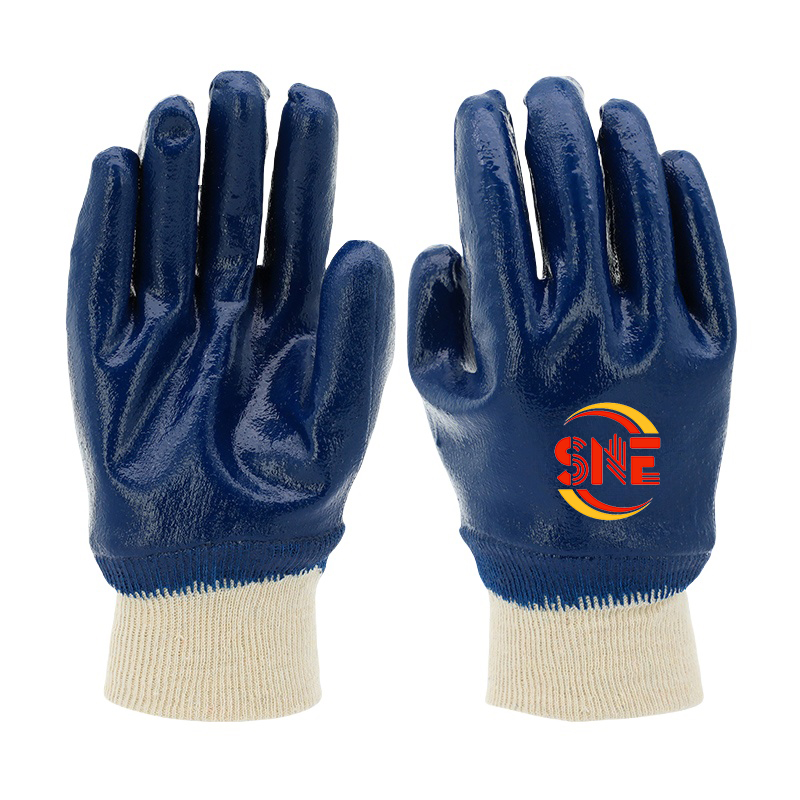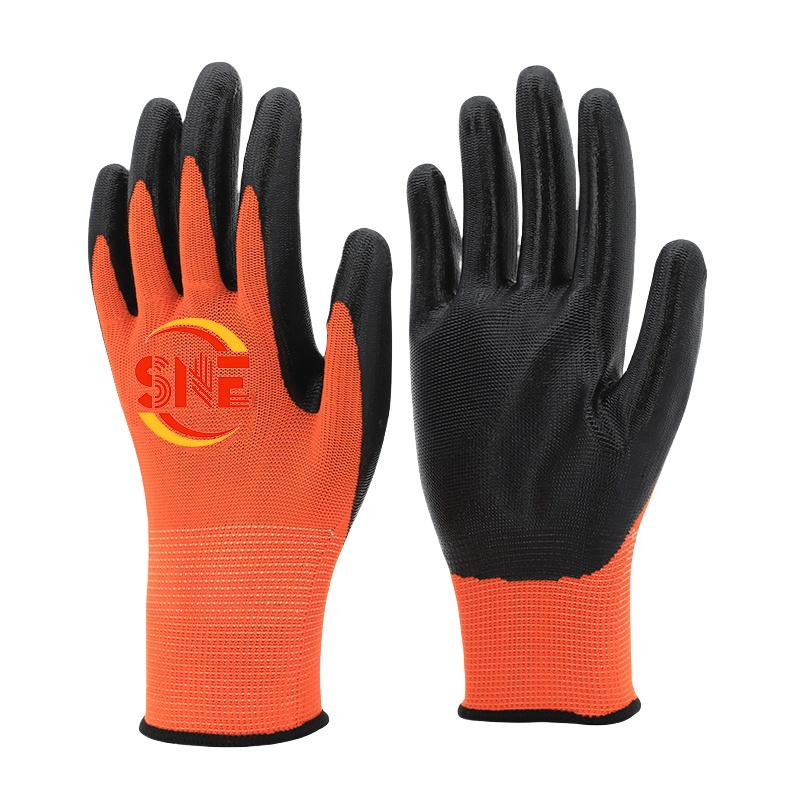OEM Work Gloves Factory: Complete Guide to Impact Gloves Price in 2025
April 13, 2025
Share This Article

In today’s industrial landscape, protecting workers’ hands is not just a regulatory requirement but a critical investment in workforce safety and productivity. Impact gloves have emerged as essential personal protective equipment (PPE) across industries where hand injuries from impacts, crushes, and pinches are common risks. As we move into 2025, understanding impact gloves pricing structures, quality considerations, and sourcing options has become increasingly important for procurement managers and safety officers worldwide.
What Are Impact Gloves and Why Are They Essential?
Impact gloves represent specialized hand protection designed with reinforced padding and materials specifically engineered to absorb and disperse impact forces. Unlike standard work gloves, impact-resistant models feature strategic TPR (Thermoplastic Rubber) shields, padding, and reinforcements across the back of the hand, fingers, and knuckles—areas particularly vulnerable to impact injuries.
These specialized gloves have become indispensable in industries such as:
- Oil and gas extraction
- Mining and minerals
- Construction and demolition
- Heavy manufacturing
- Automotive assembly
- Material handling and logistics
- Utilities and maintenance
According to recent safety data, hand injuries account for nearly 30% of all workplace accidents, with impact-related traumas representing a significant portion. The financial implications extend beyond immediate medical costs to include lost productivity, worker compensation, replacement training, and potential regulatory penalties. Qingdao Snell Protective Products has been addressing these concerns through innovative glove designs that balance protection, dexterity, and durability.
Impact Gloves Price Ranges in 2025
Understanding the current price landscape for impact gloves requires examining various factors that influence cost structures. The following breakdown provides insights into what businesses can expect to pay in 2025:
Entry-Level Impact Gloves (Basic Protection)
Entry-level impact gloves typically range from 5−5-5−15 per pair when purchased in bulk. These gloves offer fundamental impact protection with basic TPR padding and moderate durability. They’re suitable for light-duty applications or short-term projects where extensive protection isn’t required.
Key characteristics of this price range include:
- Basic TPR protection on knuckles and back of hand
- Limited finger protection (often just knuckle areas)
- Standard palm materials (synthetic leather or basic coatings)
- Moderate abrasion resistance
- Limited specialized features
Mid-Range Impact Gloves (Enhanced Protection)
Mid-range impact gloves typically cost between 15−15-15−30 per pair and represent the most common choice for ongoing industrial applications. These gloves offer a balanced combination of protection, comfort, and durability.
Key characteristics include:
- More extensive TPR coverage including fingers and metacarpal areas
- Enhanced palm materials (premium synthetic leather, nitrile, etc.)
- Improved grip technologies for various conditions
- Better breathability and comfort features
- Moderate cut resistance in addition to impact protection
- Longer wear life and better washing durability
Premium Impact Gloves (Specialized Protection)
Premium impact gloves range from 30−30-30−60+ per pair and are designed for high-risk environments or specialized applications. These represent the highest level of protection available.
Key characteristics include:
- Comprehensive impact protection system covering all vulnerable areas
- Advanced impact-absorbing technologies (D3O®, gel inserts, specialized foams)
- High cut resistance ratings (ANSI A5-A9)
- Enhanced durability for extended wear life
- Specialized coatings for chemical resistance, oil resistance, etc.
- Advanced ergonomic design for reduced hand fatigue
- Task-specific design features for particular industries
Volume Pricing Considerations
When ordering directly from manufacturers like Qingdao Snell, quantity significantly affects unit pricing. Based on current industry standards:
- Small orders (100-500 pairs): Minimal discount from retail pricing
- Medium orders (500-3,000 pairs): 10-20% reduction from base pricing
- Large orders (3,000-10,000 pairs): 20-35% reduction from base pricing
- Very large orders (10,000+ pairs): 35-50% reduction from base pricing
Qingdao Snell’s MOQ (Minimum Order Quantity) typically runs between 3,000-20,000 pairs depending on the specific model and customization requirements, making them particularly suitable for medium to large enterprises or distributors.
Factors Influencing Impact Gloves Pricing in 2025
Understanding what drives the cost of impact gloves can help procurement professionals make more informed decisions and potentially negotiate better terms with suppliers:
1. Protection Technology
The sophistication of impact-absorbing materials directly correlates with price. Advanced technologies like D3O® (a material that remains flexible until impact, then instantly hardens) command premium pricing compared to standard TPR protection. Similarly, gloves with targeted protection zones designed through computational modeling cost more than those with basic padding patterns.
2. Base Materials and Manufacturing Quality
The substrate materials used in glove construction significantly impact both price and performance. Options include:
- Synthetic leather (varying qualities and thicknesses)
- Natural leather (goatskin, cowhide, etc.)
- Specialized coatings (nitrile, latex, polyurethane)
- Technical fabrics (Kevlar®, Dyneema®, etc.)
Higher-quality base materials not only increase initial costs but also extend glove lifespan, potentially offering better value despite higher upfront pricing.
3. Additional Protection Features
Many modern impact gloves combine multiple protection elements, each adding to the final cost:
- Cut resistance (various ANSI/ISO levels)
- Puncture resistance
- Vibration dampening
- Chemical resistance
- Heat/flame resistance
- Arc flash protection
Gloves combining multiple protection features naturally command higher prices but eliminate the need for workers to change gloves between tasks.
4. Customization and Branding
For companies ordering directly from OEM manufacturers, customization options affect pricing:
- Custom colors (matching corporate branding)
- Company logos and text
- Special sizing requirements
- Packaging specifications
- Specialized testing or certification requirements
Qingdao Snell offers comprehensive customization services with relatively modest price increases for larger orders, making branded safety equipment an achievable goal even for budget-conscious organizations.
Where to Source Quality Impact Gloves at Competitive Prices
Finding reliable suppliers offering the right balance of quality, price, and service reliability represents a key challenge for procurement professionals. Here are the primary sourcing options in 2025:
Direct From OEM Manufacturers
Working directly with manufacturers like Qingdao Snell provides several advantages:
- Elimination of middleman markups (typically 30-100%)
- Direct communication for customization requirements
- More flexible MOQ negotiations
- Better quality control oversight
- Ability to specify exact requirements
The primary considerations when working directly with manufacturers include:
- Higher minimum order quantities (typically 3,000+ pairs)
- Longer lead times (30-60 days plus shipping)
- More complex logistics and import requirements
- Need for more detailed specifications and quality control processes
Through Distributors and Importers
Industrial safety distributors offer an alternative for companies unable to meet manufacturer MOQs:
- Lower minimum orders (often as low as single pairs)
- Faster delivery from local inventory
- Simplified ordering process
- Local customer service and support
- Often provide fitting services or trials
These conveniences typically come with a 30-60% price premium compared to direct manufacturer pricing, making distributors most suitable for smaller organizations or urgent requirements.
Regional Price Variations
Impact glove pricing varies significantly by region due to import duties, shipping costs, and local market dynamics:
- North America: Typically highest retail pricing (premium brands $35-70/pair)
- Europe: Moderate to high pricing with emphasis on certification ($25-60/pair)
- Asia-Pacific: Wide range from low to premium ($8-40/pair)
- Middle East: Moderate pricing with emphasis on heat resistance ($20-50/pair)
- Latin America: Moderate pricing with significant variation by country ($15-45/pair)
Qingdao Snell: A Leading OEM Work Gloves Factory
Among the various manufacturers in the global market, Qingdao Snell Protective Products Co., Ltd. has established itself as a notable player in the impact gloves manufacturing sector. Founded in 2024 but building on decades of industry experience, the company operates two manufacturing facilities in Gaomi and Nantong with six dedicated production lines.
Qingdao Snell specializes in various protective gloves, with their impact-resistant models gaining particular recognition for balancing protection with dexterity and comfort. Their impact gloves feature:
- Ergonomically designed TPR patterns that maximize protection while maintaining flexibility
- Strategic reinforcement in high-impact zones based on injury data analysis
- Palm materials optimized for specific industry applications
- Breathable linings to reduce hand fatigue during extended wear
- Machine washable construction for extended service life
With ISO9001 and CE certifications, Qingdao Snell maintains strict quality control processes throughout production. Their direct factory model eliminates intermediaries, allowing them to offer competitive pricing while maintaining high-quality standards. For organizations requiring volumes within their 3,000-20,000 pair MOQ range, they represent an excellent balance of quality, customization capability, and value.
How to Choose the Best Impact Gloves for Your Business
Selecting the right impact gloves requires careful consideration of numerous factors beyond just price. The optimal choice balances protection levels, comfort, durability, and cost-effectiveness for your specific application. Here’s a comprehensive framework to guide your decision-making process:
Assessment of Workplace Hazards
Begin by conducting a thorough risk assessment of your specific working environment:
- Impact Types: Identify the nature of potential impacts (crushing, pinching, blunt force)
- Impact Frequency: Determine how often workers face impact hazards
- Impact Force: Estimate the typical force levels workers might encounter
- Secondary Hazards: Consider additional risks like cuts, chemicals, or extreme temperatures
This assessment forms the foundation for determining the required protection level. For instance, oil rig workers face high-force, less frequent impacts, requiring maximum protection, while automotive assembly might involve frequent but lower-force impacts, prioritizing dexterity alongside protection.
Protection Standards and Certifications
Understanding relevant standards helps ensure you’re selecting gloves that meet necessary safety requirements:
- EN 388:2016: European standard for mechanical risks, now includes impact protection testing
- ANSI/ISEA 138-2019: American standard specifically for back-of-hand impact protection
- AS/NZS 2161.3: Australian/New Zealand standard for protective gloves
- ISO 13999-1: International standard for impact cut protection
The ANSI/ISEA 138 standard is particularly relevant for impact protection, classifying gloves into three performance levels:
| Performance Level | Impact Protection | Suitable Applications |
|---|---|---|
| Level 1 | Basic impact protection | Light industry, warehouse, logistics |
| Level 2 | Enhanced impact protection | General construction, manufacturing, automotive |
| Level 3 | Maximum impact protection | Mining, oil & gas, heavy construction |
Material and Design Considerations
The materials and construction techniques used in impact gloves significantly affect both performance and price:
Impact Protection Materials:
- TPR (Thermoplastic Rubber): Most common, balancing protection and flexibility
- D3O®: Advanced material that hardens upon impact, offering superior protection
- EVA Foam: Lightweight with moderate protection
- Gel Inserts: Excellent vibration dampening but can add weight
Palm Materials:
- Synthetic Leather: Durable and cost-effective
- Natural Leather: Superior comfort and abrasion resistance
- Nitrile Coatings: Excellent grip in oily conditions
- PU Coatings: High dexterity and tactile sensitivity
Construction Features:
- Seamless Knit Liners: Enhance comfort and prevent irritation
- Reinforced Thumb Crotch: Improves durability in high-wear area
- Ventilation Channels: Reduce heat buildup
- Cuff Styles: Affect wrist protection and ease of donning/doffing
Wearer Comfort and Acceptance
Even the most protective gloves fail if workers find them uncomfortable or cumbersome. Key comfort factors include:
- Weight: Heavier gloves cause greater hand fatigue over time
- Flexibility: Overly rigid protection reduces dexterity and increases effort
- Breathability: Poor moisture management leads to discomfort and premature removal
- Sizing Options: Properly sized gloves improve comfort and protection
Qingdao Snell safety products prioritize the human factors in their designs, recognizing that protective equipment must be worn to be effective. Their impact gloves feature ergonomic designs that balance protection with natural hand movement, reducing worker resistance to wearing them consistently.
Total Cost of Ownership Analysis
While purchase price is important, calculating the total cost of ownership provides a more accurate picture of value:
| Cost Factor | Calculation Method | Impact on Selection |
|---|---|---|
| Initial Purchase | Price per pair × Quantity needed | Higher quality often means higher initial investment |
| Replacement Frequency | Average lifespan in working days | Premium gloves may last 2-3× longer than budget options |
| Productivity Impact | Lost time due to glove limitations | Better dexterity maintains productivity |
| Injury Costs | Historical injury costs × Estimated reduction | Superior protection provides greater injury reduction |
| Compliance Costs | Fines/penalties avoided | Properly certified gloves ensure regulatory compliance |
For example, a premium impact glove at 25lasting30workingdays(25 lasting 30 working days (25lasting30workingdays(0.83/day) may provide better value than a basic 10glovelastingjust8days(10 glove lasting just 8 days (10glovelastingjust8days(1.25/day), even before considering injury prevention benefits.
MOQ Considerations When Ordering Impact Gloves
Minimum Order Quantity (MOQ) requirements represent a significant consideration when sourcing impact gloves directly from manufacturers. Understanding these requirements helps organizations make more informed procurement decisions:
Standard MOQ Requirements by Supplier Type
MOQ requirements vary significantly based on the type of supplier:
- OEM Manufacturers: Typically 1,000-20,000 pairs depending on:
- Glove complexity and specialization
- Customization requirements
- Production capacity and setup costs
- Wholesalers/Importers: Usually 100-1,000 pairs with:
- Higher per-unit costs than direct manufacturers
- More standardized options with fewer customization possibilities
- Shorter lead times from existing inventory
- Distributors/Retailers: Often as low as single pairs with:
- Highest per-unit costs (typically 2-3× manufacturer prices)
- Limited selection to stocked items
- Immediate availability
Qingdao Snell’s MOQ policy reflects their position as a direct manufacturer, with requirements typically ranging from 3,000-20,000 pairs depending on the specific model and customization level. This positions them well for medium to large enterprises or safety equipment distributors.
Strategies for Managing MOQ Challenges
For organizations struggling with manufacturer MOQs, several strategies can help:
- Consolidated Ordering: Combine requirements across multiple departments or facilities to reach MOQ thresholds
- Staggered Delivery Scheduling: Negotiate to have a single large order delivered in smaller shipments over time to manage inventory and cashflow
- Standardization: Reduce the variety of models used across your organization to increase volume for each specific type
- Distributor Partnerships: Work with distributors who can meet manufacturer MOQs and provide smaller quantities to end users
- Group Purchasing: Join with other companies in your industry to place combined orders that meet MOQ requirements
Balancing MOQ with Inventory Management
Effective inventory management becomes crucial when dealing with larger order quantities:
- Storage Requirements: Impact gloves require controlled environments to prevent degradation of protective materials
- Inventory Tracking: Implementing systems to monitor stock levels and usage rates
- Shelf Life Considerations: Most impact gloves have a shelf life of 3-5 years when properly stored
- Size Distribution: Analyzing your workforce’s size distribution to order appropriate quantities of each size
How to Customize Impact Gloves with Your Logo and Branding
Customizing work gloves with company branding offers multiple benefits beyond mere aesthetics. It enhances corporate identity, improves equipment accountability, and can boost worker pride and compliance with safety protocols. In 2025, customization options have expanded significantly.
Available Customization Options
Modern manufacturing techniques offer numerous customization possibilities:
Visual Branding Elements:
- Company logos (single or multi-color)
- Text and slogans
- Department or team identifiers
- Safety messaging
- QR codes linking to training materials
Custom Design Features:
- Corporate color schemes
- Custom cuff designs
- Special reflective elements
- Worker name or ID spaces
- Role-specific color coding
Performance Customizations:
- Industry-specific grip patterns
- Application-tailored impact protection zones
- Modified cuff styles for specific tasks
- Special climate adaptations (insulation, ventilation)
Qingdao Snell offers comprehensive customization services, with their design team working directly with clients to translate branding requirements into production-ready specifications. Their advanced printing and molding capabilities allow for detailed logo reproduction even on textured TPR surfaces.
Customization Process and Requirements
Understanding the typical customization process helps set realistic expectations:
- Initial Consultation: Discussing requirements, applications, and desired customization elements
- Design Submission: Providing logo files and branding guidelines (typically vector formats preferred)
- Sample Approval: Reviewing physical or digital samples before full production
- Production Setup: Creating necessary tooling and printing templates
- Production and Quality Control: Manufacturing with additional inspection points for custom elements
Most manufacturers, including Qingdao Snell, require:
- High-resolution logo files (AI, EPS, or high-resolution PDF)
- Color specifications (Pantone or CMYK values)
- Clear placement instructions
- Approval of pre-production samples
Cost Implications of Customization
Customization naturally adds to base product costs, but the impact varies by method and volume:
| Customization Type | Cost Impact (% above base) | Minimum Order Impact | Lead Time Impact |
|---|---|---|---|
| Screen Printed Logo (1-2 colors) | +5-15% | Moderate increase | +7-14 days |
| Embossed/Debossed Logo | +10-20% | Larger increase | +14-21 days |
| Custom TPR Colors | +8-15% | Significant increase | +7-14 days |
| Fully Custom Design | +20-40% | Substantial increase | +21-35 days |
For large-volume orders, these percentage increases often decrease as setup costs are amortized across more units. Qingdao Snell’s pricing structure reflects this economy of scale, with customization costs becoming quite reasonable for orders approaching their upper MOQ range of 20,000 pairs.
Case Study: Customization ROI
A medium-sized oil services company implemented branded impact gloves across their operation and measured the following results:
- 15% increase in glove lifespan due to improved accountability
- 23% reduction in glove “disappearance” compared to generic models
- 8% improvement in safety compliance (workers wearing gloves when required)
- Enhanced corporate image with clients and regulatory inspectors
Despite paying 12% more per pair for customized gloves, the company achieved a positive ROI within the first quarter through reduced replacement costs and improved compliance.
What Are the Most Durable Materials for Impact Gloves?
The durability of impact gloves directly affects their cost-effectiveness and protection consistency. Different materials offer varying advantages depending on application environments and usage patterns.
Palm Materials Durability Comparison
The palm area typically experiences the most wear and determines overall glove lifespan:
Synthetic Leather:
- Moderate initial cost
- Good abrasion resistance
- Consistent performance characteristics
- Machine washable with proper care
- Typical lifespan: 2-4 weeks of heavy use
Genuine Leather (Goatskin/Cowhide):
- Higher initial cost
- Excellent abrasion resistance
- Improves comfort with wear
- More challenging to clean effectively
- Typical lifespan: 3-6 weeks of heavy use
Nitrile Coatings:
- Moderate initial cost
- Superior chemical and oil resistance
- Excellent grip in wet/oily conditions
- Potential degradation with UV exposure
- Typical lifespan: 2-3 weeks of heavy use
PU (Polyurethane) Coatings:
- Lower initial cost
- Good dexterity and tactile sensitivity
- Moderate abrasion resistance
- Excellent dry grip characteristics
- Typical lifespan: 1-3 weeks of heavy use
Advanced Composite Materials:
- Highest initial cost
- Engineered for specific performance characteristics
- Often combines multiple material advantages
- Can be designed for specific environmental challenges
- Typical lifespan: 4-8 weeks of heavy use
Impact Protection Materials Longevity
The back-of-hand protection materials face different durability challenges:
Standard TPR (Thermoplastic Rubber):
- Good impact protection-to-weight ratio
- Moderate resistance to oils and chemicals
- Can become brittle in extreme cold
- May degrade with UV exposure over time
- Typical functional lifespan: 2-3 months
D3O® and Similar Advanced Materials:
- Superior impact absorption
- Maintains flexibility through temperature ranges
- Resistant to most environmental factors
- Minimal degradation of protective properties over time
- Typical functional lifespan: 4-6 months
EVA and Foam Composites:
- Lightweight with good initial protection
- May compress permanently with repeated impacts
- Moderate environmental resistance
- Can absorb contaminants over time
- Typical functional lifespan: 1-2 months
Qingdao Snell protective products focuses on optimizing material combinations for specific industries, recognizing that durability requirements vary significantly across applications. Their automotive industry gloves, for instance, emphasize resistance to petroleum products and sharp edges, while their construction models prioritize abrasion resistance and impact protection.
Factors Affecting Durability Beyond Materials
While material selection is crucial, several other factors significantly impact glove longevity:
- Construction Quality
- Stitching techniques and thread quality
- Reinforcement in high-stress areas
- Bonding methods between different materials
- Quality of elastic and closure components
- Maintenance Practices
- Regular cleaning procedures
- Proper storage between uses
- Drying methods after wet conditions
- Inspection and rotation practices
- Usage Environment
- Exposure to UV radiation
- Temperature extremes
- Chemical contaminants
- Abrasive surfaces and materials
- Fit Appropriateness
- Excessive stretching due to undersizing
- Bunching and accelerated wear from oversizing
- Stress distribution across seams and joints
By addressing these factors alongside material selection, organizations can significantly extend glove lifespan and improve cost-effectiveness, regardless of the initial price point.


